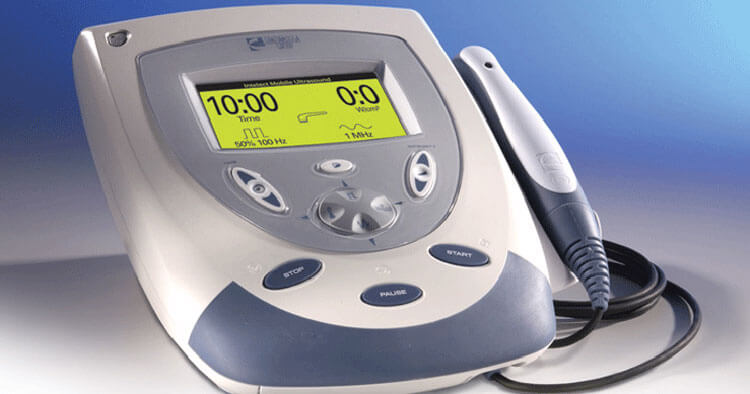Treatment Modalities and Aids
Therapeutic Ultrasound And Physiotherapy
How Can Therapeutic Ultrasound Influence Tissue Repair?
Following injury there are generally considered to be three main stages of tissue repair that therapeutic ultrasound can have an influence on,
- the inflammatory phase,
- the proliferative phase
- and the remodeling phase.
The use of therapeutic ultrasound can have a positive effect on all three of these phases of tissue healing, with the exact role ultrasound therapy can play at each stage is highlighted below.
Ultrasound Effects During The Inflammatory Phase
Ultrasound therapy has a stimulating effect on mast cells, platelets, white cells and the macrophages by increasing the activity of these cells. Therapeutic ultrasound could be described as being pro-inflammatory, noting that an inflammatory response is essential to effective tissue repair. The more efficiently this inflammatory process can be completed, the quicker the injured tissue can progress to the next phase of healing. As a pro-inflammatory stimulator another benefit of ultrasonic therapy is that chemically mediated inflammatory events are associated with stimulation of the next stage of healing the proliferative phase. So hence the promotion of the inflammatory phase also acts as a promoter of the proliferative phase of healing.
*Local blood flow may be increased as a result of the application of ultrasound therapy and it is therefore not advised to use therapeutic ultrasound immediately following injury.
Effects Of Therapeutic Ultrasound During The Proliferation Phase
Proliferative phase of healing is the scar production phase. During this scar production phase ultrasound therapy has a stimulative effect through the excitation of fibroblasts, endothelial cells and myofibroblasts. All these cells are normally active during scar production in the proliferation phase and physiotherapy applied ultrasound therapy works a stimulator to this cellular activity. Meaning ultrasound is pro-proliferative maximizing the efficiency of the proliferative phase helping produce the required scar tissue in an optimal fashion.
Ultrasound Therapy And The Remodeling Phase
The remodeling process following injury can last for a year or even longer, this phase is an essential component for quality tissue repair. During the remodeling phase “generic” scar tissue produced in the initial stages of healing is refined adopting functional characteristics of the tissue it is replacing/repairing. Therapeutic ultrasound used in the remodeling phase can influence the remodeling of the scar tissue helping increase the tensile tissue strength as well as enhancing scar mobility. Ultimately the use of ultrasound treatment during the remodeling phase can enhance the functional capacity of the scar tissue.
Ultrasound Reducing Healing Time Frames
Using ultrasound therapy during the inflammatory, proliferative and remodeling phases of healing tissue can potentially stimulate and enhance these normal events, increasing the efficiency of the repair phases. One of the greatest proposed benefits of physiotherapy applied ultrasound being that it is thought to reduce the healing time of certain soft tissue injuries, speeding up the rate of healing as well as enhancing the quality of tissue repair.
Disclaimer: This information is provided as an educational service and is not intended to serve as medical advice. Anyone seeking specific medical advice or assistance on Therapeutic Ultrasound And Physiotherapy should consult his or her general practitioner, physiotherapist, orthopaedic surgeon or otherwise appropriately skilled practitioner.



Therapeutic ultrasound is an action tool used by physical and professional therapists.
Therapeutic ultrasound is often used for treating chronic pain and promoting tissue healing. It may be recommended if you experience any of the following conditions:
• carpal tunnel condition
• shoulder pain, counting frozen shoulder joint
• tendinitis
• ligament injuries
• joint stiffness